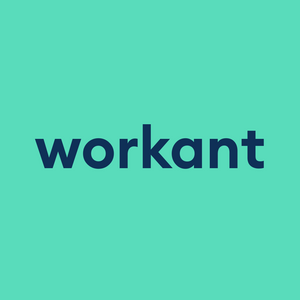You’ve probably heard of HR analytics, the process of analyzing data related to a business’ workforce to improve organizational outcomes. You’ve also probably heard of HR metrics, the quantifiable indicators that help us measure and gauge business success at a given time.
You definitely know that performing HR analytics and determining HR metrics necessitates the use of employee data and information. But you may not know exactly what these datasets consist of or where the data points come from.
Let’s take a deeper look at HR data.
What is HR data?
HR data is represented by facts, statistics, or information that can be used for reference or analysis. As business leaders and HR professionals, HR data can be one of the most powerful tools in our diversified toolbox, as it provides otherwise inaccessible knowledge about the workforce.
If HR data is analyzed and utilized intelligently, it gives us a limitless range of possibilities for innovative and proactive program implementation, overarching process improvement, workflow optimization, and many more avenues toward augmenting any business’ chance for success.
Intelligent and forward-thinking HR requires a data-driven foundation, so understanding HR data (and knowing how to use it well) should be a top priority for anyone working within the field.
What are HR data sets composed of?
There are seemingly infinite sources for employee data in 2022, and more and more will continue to emerge as enterprise continues to trend toward increasingly data-driven operating procedures.
Two main types of data exist—internal and external data. Internal data comes from somewhere within the company or organization itself, whereas external data is collected from other secondary sources.
Internal data (primary)
Internal data is compiled from company training records, performance data, pay rates, employee records, reporting structures, disciplinary data, benefits data, payroll/costs information, sales data, customer data, and more.
External data (secondary)
While sources depend largely on the industry, external data sets can be built by collecting historical industry data, financial data, political outcomes, weather reports, economic analyses, environmental impact studies, health data, and more.
Internal data is also called first-party data, whereas external data can be either second-party or third-party data.
Second-party refers to information collected directly by a trusted partner (or business with a direct link to your audience or employees) and then acquired by your organization. Third-party refers to data collected by an organization not directly related to your customer base or workforce.
Internal data can also come straight from employees themselves in the form of self-reported information from initiatives such as surveys or questionnaires, directly observed data resulting from observations, data collected through things like website activity or app usage, customer feedback, or a variety of other modes.
How is HR data acquired, exactly?
There are many ways to get your hands on HR data. Here are just some of the routes you can take to expand your database:
● Compile statistics and info by (manually or automatically) scouring documents, records, and all internal materials containing employee data.
● Monitor employee usage and activity on platforms such as social media apps or lead forms.
● Use intelligent programs to collect available external second-party data related to things such as current organizational goals or trends within your field and bolster your pool of data by adopting new third-party data sources relevant to your industry.
● Extract first-party data from software modules such as Applicant Tracking, Payroll, or Time Management systems, or utilize an automated overarching HR-specific system that digitizes and instantly collects, presents, and categorizes primary data across different categories.
● Hire data collection experts to acquire harder-to-find information.
● Conduct interviews or focus groups with customers, employees, and leadership to get valuable first-party data.
● Directly observe users, employees, or leaders whenever you can (through automated programs/online apps or software or the manual collection of qualitative data in the workplace)
10 Tips and strategies to consider with HR data
- HR data doesn’t stand alone or hold value in itself; look at it holistically, strategically, and with a deep understanding of the surrounding context. You must understand more than the “what,” and to get to the “why,” you must figure out the story behind each stat.
- Always remember that the purpose of collecting and referencing HR data is not to simply have more numbers at your disposal but to improve your decision-making capacities.
- Intelligently prioritize the most important data, as data collection and management take time and money. Use your resources wisely and measure what matters most to your company’s growth.
- Digitize, optimize, and analyze data using the appropriate technologies, which vary based on industry, company size, long-term goals, priorities at a given time, and other factors. Hire experts if you aren’t sure which tech and tools are right for your business.
- Carefully and continuously consider the best practices, approaches, and techniques throughout your HR data collection and HR analytics practices (based on your industry knowledge, your organization’s growth areas, etc.).
“Information is a source of learning. But unless it is organized, processed, and available to the right people in a format for decision making, it is a burden, not a benefit.” - C. William Pollard, the Chairman of Fairwyn Investment Company
6. Adapt your data collection and analytics practices in accordance with the evolution of the workforce and industry standards.
7. Organize, categorize, and centralize HR data within an easily accessible, streamlined, and systematized framework that allows for customization.
8. Incorporate the use of qualitative data whenever it’s advantageous to do so. Analytics processes may not be as straightforward and might be more challenging, but qualitative information can provide incredibly helpful insights.
9. Never neglect data security and protection, or forget about compliance and regulations.
10. Don’t forget to focus closely on primary data directly from your workforce, as data from employees themselves is invaluable.
Conclusion
HR data is the key to understanding and optimizing any workforce in any industry. Collecting, interpreting, evaluating, and utilizing data and metrics strategically provides you with augmented knowledge, enhanced HR analytics practices, and optimized business insights.
While HR data continues to evolve, what remains consistent is the importance of keeping a finger on the pulse when it comes to data trends, technologies, and industry-specific innovations.
You may not be an industry on collecting and innovatively utilizing HR data, and that’s ok. Hire a team of professionals, adopt software programs to help with HR analytics processes and integrate your systems into one simplified platform.

